Guest Blog: Listening to the Dead, the Great War & Mother Canada
**Please note the views expressed on this guest blog are not necessarily those of PeaceQuest**
LISTENING TO THE DEAD:
GREAT WAR FANTASIES AND THE ‘MOTHER CANADA’ CONTROVERSY
Sean Howard and Lee-Anne Broadhead

The original Canada Bereft facing east over the Douia Plain. Image credit: Amelia Silver.
Speaking at the Canadian National Vimy Memorial in France on April 9, 2007 – the 90th anniversary of the opening of the battle of Vimy Ridge – Prime Minister Stephen Harper solemnly intoned: “It is sometimes said that the dead speak to the living. So at this special place, on this special day, let us, together, listen to the final prayer of those whose sacrifice we are honouring. We may hear them say softly: ‘I love my family, I love my comrades, I love my country, and I will defend their freedom to the end.’”
Instead of thousands of dead, with a natural variety of views and voices, the PM conjures a single, heroic, sacrificial figure, the Christ-like ‘Johnny Canuck’ whose crucifixion, literal and symbolic, on the fields of France and Flanders gave rise to the greatest nation on earth. Every country, he argued, “has a creation story. The First World War and the battle of Vimy Ridge are central to the story of Canada.” For this reason, although Vimy may seem “a long way from home,” “there may be no place on earth that makes us feel more Canadian. Because we sense, all around us, the presence of our ancestors.” But what if, somewhere, someday, we could go one better: what if we could somehow bring them back, reunite ‘Mother Canada’ with the children who, miraculously, gave ‘birth’ to her?
This, no less, is the feat the Never Forgotten National Memorial (NFNM) Foundation hopes to achieve on July 1, 2017 – the 150th anniversary of Confederation, celebrated in Vimy’s centenary year – when, according to already detailed planning, the Prime Minister will unveil a towering ‘Mother Canada’ statue on the shores of Cape Breton, “welcoming back,” in the words of former Peter MacKay (Defence and then Justice Minister in Mr. Harper’s government, “the souls of those who served our country, who preserved our democracy, our freedom, everything that we enjoy.”
But while ‘she’ is supposedly ‘calling home’ all Canada’s overseas war dead, ‘Mother Canada’ explicitly gestures, erect and open-armed, across the Atlantic to the comparatively diminutive, head-bowed ‘Canada Bereft’ figure at Vimy. It is the imagery and legacy of the ‘Great War,’ the supposed source of Canada’s greatness, which dominates and permeates the whole design – complete with a ‘Commemorative Ring of True Patriot Love,’ a ‘We See Thee Rise’ Observation Deck,’ and a ‘With Glowing Hearts’ National Sanctuary – and gives it, for its proponents, its overwhelming emotional, quasi-mystical appeal.
After a decade-plus of the ‘war against terror,’ repatriation ceremonies and highways of heroes – a relentless recasting of Canadian identity in martial mould – those proponents, from Harper and MacKay down, doubtless expected that appeal to be broad and deep. As word of the scheme spread this summer, however, many Canadians – the vast majority, in fact, of the many thousands who registered an opinion on ‘old’ and ‘new’ media – reacted with disbelief, disgust and anger.
Much of the opposition, understandably, centres on the patent inappropriateness of the proposed location: Green Cove, a jewel-in-the-crown of the Cabot Trail and Cape Breton Highlands National Park, a site not just of immense natural beauty but documented geological and cultural significance, its “ecological integrity” supposedly protected by Parks Canada’s own mandate and management plan. In early June, 28 retired former senior Parks Canada managers wrote an incandescent Open Letter to Environment Minister Leona Aglukkaq, slamming both the project and the perfunctory process established to review it. “Decisions,” they concluded, “are being imposed on Parks Canada in opposition to its governing legislation and policies.”
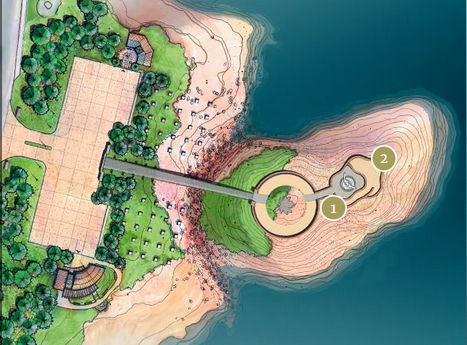
A to-down view of the site’s proposed design. From the NFNM website.
Others also object to the statue’s ironically ‘over the top’ design, a “vulgar and ostentatious…monstrosity” in the words of 92-year-old Cape Breton World War II vet Valerie Bird to the UK’s Guardian newspaper last June. They question, given the indisputably profound cultural significance of both the Vimy Memorial and the National War Memorial in Ottawa, the supposed ‘commemorative gap’ the new site is intended to fill. And although the NFNM Foundation – the brainchild of Toronto businessman Tony Trigiani – vows to privately raise the minimum $25 million required, many also worry about the potential cost to taxpayers.
Parks Canada, indeed, the agency supposedly assessing the Foundation’s application, has already donated (at a time of service and staff cuts) $100,000 for web support and market research, and a much larger sum has now been requested from Canadian Heritage. Thousands of stomachs have also been turned by the rank commercialism involved, including – to the dismay of The Vimy Foundation – the ‘trademarking’ of ‘Mother Canada’, the registration of a vast array of often militaristic merchandize, and promises that corporate supporters will be “recognized in the naming of halls, galleries, and displays” and offered “ongoing marketing opportunities.” And more generally, there is widespread alarm at the disastrous precedent the project might set. As Green Party Leader Elizabeth May told the Halifax Chronicle Herald in late July: “I’m shocked that anyone would consider it… It’s an abuse of power by the Prime Minister. … I would have said 10 or 12 years ago that Parks Canada would have protected the integrity of the national parks. In this instance, Parks Canada is operating as a branch of the Prime Minister’s Office.”
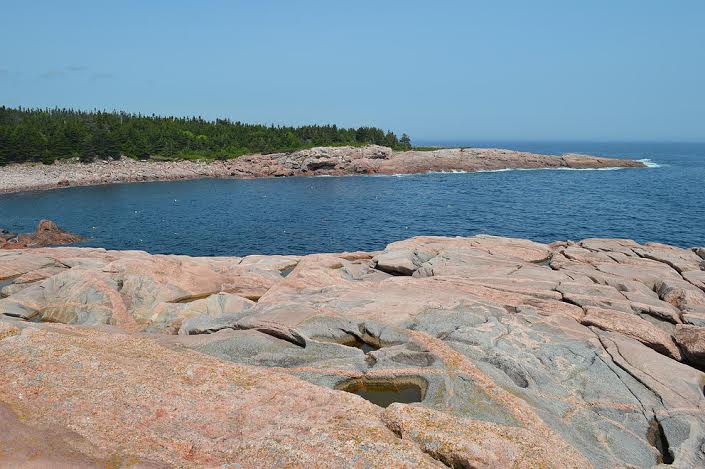
A view of Green Cove as it is today. The proposed site of the Mother Canada monument. Click to enlarge.
But perhaps the most shocking aspect of the plan, often lost in the furor, is the way not just the name and memory but the identities, even voices of the war dead would be hijacked and fetishized, conscripted in the service of partisan propaganda. To generate fevered enthusiasm for the 2017 reunion of ‘mother’ and ‘children’, for example, a cross-country ‘Homecoming Tour’ is planned, lasting from Commonwealth Day (mid-March) to Canada Day, in which “repatriated soil and seawater capsules” will travel in solemn procession from Nova Scotia, via Ottawa, to British Columbia, then east again for a “grand arrival of the capsules in Halifax” and their final journey to Cape Breton and Green Cove, where, “One week before Father’s Day,” the Glorious Dead, in digestible capsule form, “will be laid to rest at the memorial’s ‘With Glowing Hearts’ National Sanctuary at Remembrance Point”.
In the wake of this journey, a vast ‘Necklace of Tears’ will be built “to span the width and breadth of this nation across the length of the iconic Trans Canada Trail,” “proudly…creating an unprecedented link of love and respect embracing all corners of” the land. At the site itself, visitor-pilgrims will be encouraged to ‘Adopt’ (at unspecified price) a “member of Our Fallen”: “once one of our Heroes is selected, the donor can arrange to have a commemorative upright marker placed on the trail at a location of their choosing.” No relationship to the chosen ‘hero’ is necessary (and no permission from his descendants required): we are, after all, members of the same national family, children of the same mother. And for the kids an opportunity, presumably unique in the world, to correspond with the dead: a “Letters to the Fallen” program, “based in homes, schools, clubs and libraries across the country,” allowing “young Canadians to actually compose heartfelt letters” to individual soldiers, “to be delivered directly” to them in their new Cape Breton rest home, with “each and every letter…respectfully responded to in kind and mailed back by a dedicated volunteer member of the memorial staff”.
Every such ‘dedicated volunteer’, of course, would write in the sincere conviction that Canada was ‘born’ in the mud and blood of WW1; that the Great War was fought for a great and noble, if generally unspecified, cause; and that, in the panting purple prose of the Foundation website, such new forms of hero-worship are a logical “extension of the bond of love and respect so deeply held for Our Fallen… One that shall never be broken… Ever!” They will, in fact, not only know exactly what to think and feel: they, like their Prime Minister, will believe they know exactly what the men in the trenches thought and felt.
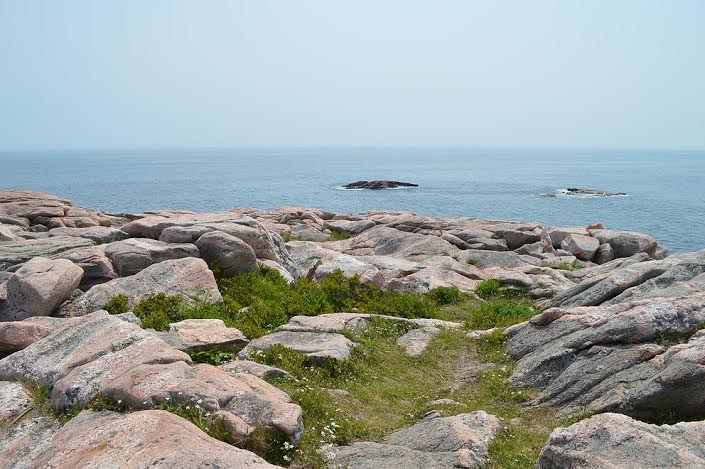
A view of Green Cove as it is today. The proposed site of the Mother Canada monument. Click to enlarge.
In (highly inconvenient) truth, however, most ‘Canadians’ saw themselves answering the call from Britannia, the real ‘mother country,’ in defence not of freedom and democracy – let alone racial equality or cultural diversity – but rather her ‘right’ to conquer and rule other lands and peoples. And many detested being called ‘hero,’ and handed a halo, for doing a duty they came to despise. In A Terrible Beauty, her landmark 1977 study of ‘The Art of Canada at War,’ the late Heather Robertson quotes the letter of an anonymous stretcher-bearer to his wife: “Every man I have spoken to: German, French, English, Canuck, are sick to death of it… [H]ow on earth is a husband (like me) to write to a wife (like you) about…a war like this? None of us are heroes. To read of ‘Our Splendid Canadians’ makes us ill.”
That man, disillusioned and haunted, may one day be the ‘hero’ selected by a keen young participant in the ‘Letters to the fallen’ program. And we already know what ‘he’ would reply: “I love my family, I love my comrades, I love my country, and I will defend their freedom to the end.’” On the same page, Robertson quotes letters from two named soldiers, both of whom ‘fell’: Talbot Papineau (to ‘Dear Miss Fox’) – “There should be no heroism in war. No glorification – no reward.” – and Armine Norris (to ‘Mother Dear’) – “…this wreck of a world gone insane…” Again, they may be written to, and spoken for, telling some naïve high school student that, yes, there should be heroism and glorification in war.
In Crisis of Conscience: Conscientious Objection in Canada during the First World War, Amy Shaw refers to “the encouragement of conformity that wartime promotes”: a conformity dependent on an utterly misleading impression of the inglorious industrialised slaughter underway in Europe and beyond. Is not the ‘Mother Canada’ project, at root, an attempt to recreate such an atmosphere in peacetime, to instil – set in stone – a permanent pro-war, pro-warrior conformism?
Should such a sinister venture succeed, it would with hideous irony return us to the fatal certainties and calamitous complacency of August 1914, a time recalled with horror by Harrison Livingstone of Marble Mountain, quoted in Cape Bretoners in the First World War: “The only thing I ever did in my life that I’m thoroughly ashamed of was going away to war and leaving my mother alone… [A] feeling created by propaganda permeated the whole of society, even to the country districts. It became an emotional thing. Patriotic, emotional. And everybody was very well brainwashed, I would say. Oh, Cape Breton was completely. And everybody went in the army, and about half of them were killed.”
The Prime Minster, however, has no time or tolerance for such irreverent, non-conformist, ‘un-Canadian’ views. And from what he’s heard from the dead, neither do they.
Sean Howard is adjunct professor of political science at Cape Breton University. Lee-Anne Broadhead is professor of political science at CBU. Both are members of Peace Quest Cape Breton and Friends of Green Cove (www.friendsofgreencove.ca).
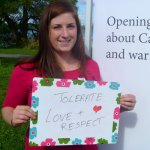
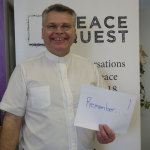
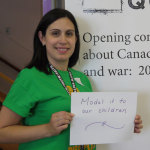
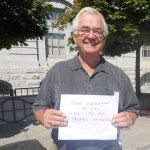
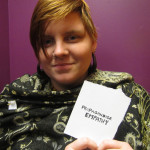
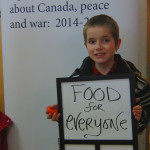
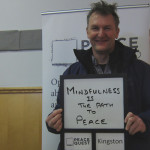
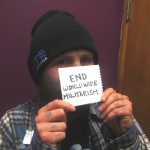

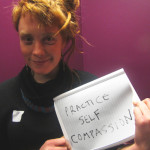

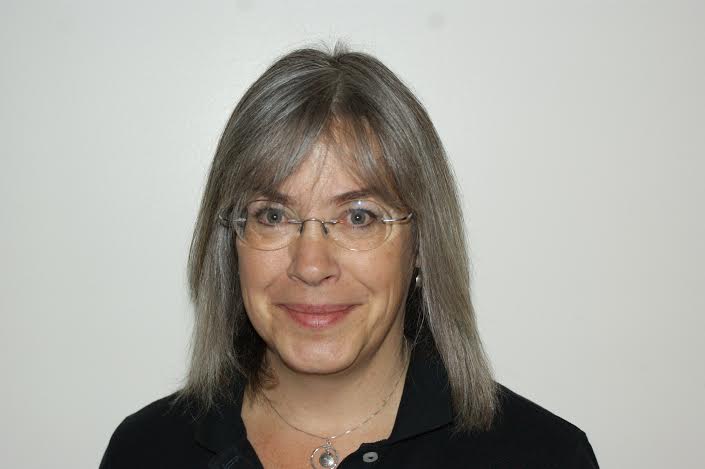
Margaret Young
September 23, 2015 @ 3:57 pm
Powerful, well-researched, thought-provoking, insightful, and absolutely chilling — especially the detail about the exchange of letters between students, writing letters to their “adopted” fallen soldier, and the reply penned by a patriotic “volunteer”: a web of jingoistic falsehood, and utterly macabre!
Jeff Piker
September 25, 2015 @ 1:23 pm
Reading this insightful blog reminds me again how shallow and superficial have been critiques by federal Liberals and NDP during the current election, of the military policies, strategies and propaganda of the Harper-led Conservative government. The ‘Mother Canada’ affair (so well-addressed here) is but one of a truckload of ‘warrior nation’ assaults on our history, culture and constructive role in the world.
I believe that it’s incumbent on peace-work groups like PeaceQuest-Kingston and its affiliates and contact groups to try to focus public attention during the election period on the militarization of Canada that has been happening. The only such group I’m aware of that is doing this kind of work is The Rideau Institute (ceasefire.ca). When NDP and Liberals (and Green and Bloc?) aren’t doing this crucial work, we need to be (1) on their case, and (2) doing that work ourselves.